
What Is Pelvic Organ Prolapse?
If you search online for a definition of pelvic organ prolapse, you will find something like this: Pelvic organ prolapse is a dropped or fallen organ and they will say that the cause is weak pelvic floor muscles. This type of definition may be familiar to you and you are not alone. It wasn't until I had my own experience of Pelvic Organ Prolapse (POP) that I started to question this very definition and cause.
My symptoms worsened when I followed the traditional strength exercises so I was determined to find another more holistic way. I learned everything I could about prolapse, pelvic floor assessment and treatment, the history behind the protocols, and the research that seemingly supported the current treatment model. I studied modern anatomy and discovered the dynamic nature of fascia and the Biotensegrity model of how our body responds to all we do. This led to a vital collaboration with Anna Crowle, Women's Pelvic Floor Physiotherapist and researcher, and the development of my Whole Body Pelvic Health method.
I have since created my own definition of pelvic organ prolapse (POP):"Pelvic Organ Prolapse is the displacement of one or more pelvic organs, such as the uterus, bladder or bowel due to an imbalance of the tensional support in or influencing the pelvis."
The word prolapse does not accurately depict the condition, gives negative connotations, suggests it's irreversible, and can impact how women experience it in their bodies. In my book HOPE For Your Pelvic Floor, I suggest a new name for it, Pelvic Organ Displacement (POD).
Assessment and Treatment of Prolapse
It might surprise you that according to the National Institute for Healthcare Excellence (NICE)at least 50% of women report symptoms of POP. I would suggest it's more than this in reality because I, for one, didn't know all the symptoms before I started researching. NICE and the American College for Obstetricians and Gynecologists (ACOG) recommend traditional strength-based exercises, pessary, and in some cases surgery. The NICE guidelines in particular are based on three clinical studies that applied strength-based exercises for the treatment of prolapse. During further investigation of these studies, you can see the results don't meet the 15 points that would make these clinically significant results and don't reduce the need for surgery. Yet, this is still a widespread recommendation.
Pelvic Floor Balance
I propose that weak pelvic floor muscles do not tell the full story of why women get prolapse. Even if they are weak, what has caused them to be weak and how are they meant to function? Your pelvic floor is meant to respond spontaneously to all life's activities from coughing and laughing to the unfurling and lengthening needed for squatting, walking, and childbirth.
Graham Scarr author of Biotensegrity states that "the biotensegrity concept inherently recognises that stability and ease of movement are not due to the strength of individual components but because of the way the system is configured."
Based on Biotensegrity concepts, our organs are suspended in our tensional support system. A system of constant give and take and balancing neither strong nor weak. If that system has excess tension it loses its ability to constantly oscillate and adapt to conditions and can pull one or more organs out of place. This unhelpful tension results from immobile tissue that has become stiff from lack of use, scar tissue from injury, or excessive use in the case of hypertonicity. This imbalance can also pull on your femur causing groin or Piriformis pain or pull on your sacrum causing sciatica. Importantly stiffness also means the neuromuscular coordination is compromised because that area has reduced sensation and communication with your control center, your brain. This could seem like the muscles are weak because they are not capable of responding to your cough or sneeze and they just aren't getting the messages from your brain in time.
When you have an injury your body will immediately start the self-healing process including building scar tissue to support the area. In time you would rehabilitate with manual therapy to release scar tissue, restorative exercises, and neuromuscular repatterning based on the function. This is also true of your pelvic floor if you have an injury or surgery anywhere local to the pelvic floor, it will be affected. In particular, 90% of women who have given birth will have had a birth injury such as a tear or episiotomy resulting in scar tissue that will pull on the surrounding area creating an imbalance through the pelvis, hip, spine and beyond and is a common cause of prolapse.
Types Of Pelvic Organ Prolapse
For prolapse to be diagnosed a grade 1 - 4 is assigned based on how far the organ has descended into the vagina. This is a snapshot in time for the woman and is subjective due to the assessor. If a woman is immediately post-natal (although prolapse is not isolated to women who have given birth) her body is naturally healing for some time afterward and it can reduce or restore itself. The grading varies depending on the time of the woman's cycle, day of the week, time of day, and other activities the person has or has not done. It also does just naturally fluctuate. For example, if you have a full bladder, your bladder has gotten bigger inside of you so your uterus and rectum have been moved out the way a little to accommodate that. Our tissue is designed to move and the displaced organ is the same.The three common types of prolapse are:
Cystocele - The bladder displaces/bulges into the vagina
A Cystocele can feel like there is pressure on the lower abdomen, causing it to feel uncomfortable to lie prone. Some women can feel a constant need to empty their bladder or like they haven't fully emptied. There can be pain in the lower abdomen or inside the pelvis.
Rectocele - The rectum displaces/bulges into the vagina
Women with Rectocele may feel like they haven't fully emptied their bowel, they may need to manually assist themselves to pass bowel movements or have to strain considerably to pass. I recommend a squatty-potty and squat-type movement to help. They may have loss of control of gas or bowel incontinence and can feel uncomfortable with some exercises like rolling where they can't control gas from escaping.
Uterine Prolapse - The uterus displaces/bulges into the vagina
A Uterine Prolapse can feel like there is a tampon or toilet tissue stuck, or the internal folds of skin are in the wrong place. You may find that women prefer not to wear leggings due to the feedback of the fabric tight against them. Adduction and strongly loaded adduction like using the magic circle or horseback may be uncomfortable or increase their symptoms.
Incontinence is not the most common symptom of prolapse. However, incontinence can be present and it can be an unexpected drip or urge and loss of control and can be worse during a woman's menstrual cycle.
What to look out for in Pilates
Supine with knees bent in readiness for a movement you may notice that one-half of the pelvis is lifted, glutes look tight, pulled in, or a posterior pelvic tilt. Women with prolapse and general pelvic imbalances will find it hard to differentiate into hip flexion and instead will be almost locked into posterior tilt. This is often due to the pattern of gripping and bracing in fear of something falling out. This lack of differentiation will also be present during single leg movements such as Eve's Lunge or Single Leg Stretch where you have one hip flexing and one extending. In addition, you will see hip hiking and reduced hip flexion on the side where the hip is meant to be flexing. This is often present in those women who have had a tear and/or an episiotomy when untreated scar tissue creates stiffness and pulls on neighboring areas. Roll up and similar exercises can feel like you roll over one sit bone and then the other and in the rolling series you might find yourself doing the comedy rolling round in a bit of a circle. Both can be due to general imbalance through the pelvis and women with prolapse require release work around the glutes and deep hip muscles. You may find inversion movements like Long Spine, Tower or even hanging can cause air to pass out of the vagina due to the folds of tissue creating a vacuum that when released can make noise.
Depending on the degree and type of prolapse, women may feel downward pressure or the bulging sensation increase during certain movements involving hip abduction or exercises such as Leg Pull Front, Footwork with a heavy spring, and any of your abdominal series. However, it is not isolated to these sorts of movements so it's important as you participate or teach to be informed and check in regularly. You will find ways to adapt movements in my class Pelvic Health Reformer.
In Whole Body Pelvic Health, we have key concepts that we work through and one of them is to improve the range of movement throughout the body, in particular all seven joints of the pelvis L5/S1, both SIJ, Pubic symphysis, hip sockets, and coccyx. You may participate in a class to improve your range of movement in preparation for the more challenging exercises above. My class Yawn Your Hips Open, is a great example.
Recommendations
Pilates holds great potential to help improve prolapse symptoms by restoring a balanced range of movement in the tissue and joints. Following this with opportunities to stimulate the natural spontaneity and responsiveness of the pelvic floor with reduced load and gradually progressing to more challenging movements and environments.
For more information on pelvic organ prolapse, you can visit my website, Instagram, YouTube, and Whole Body Pelvic Health iOS app.
Comments
No comments yet. Be the first!

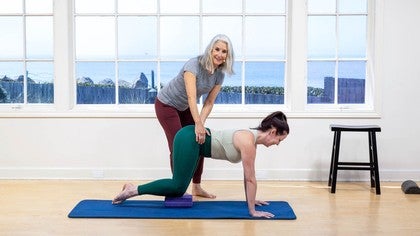

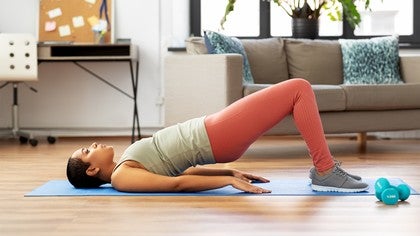

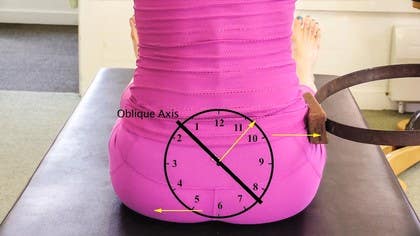
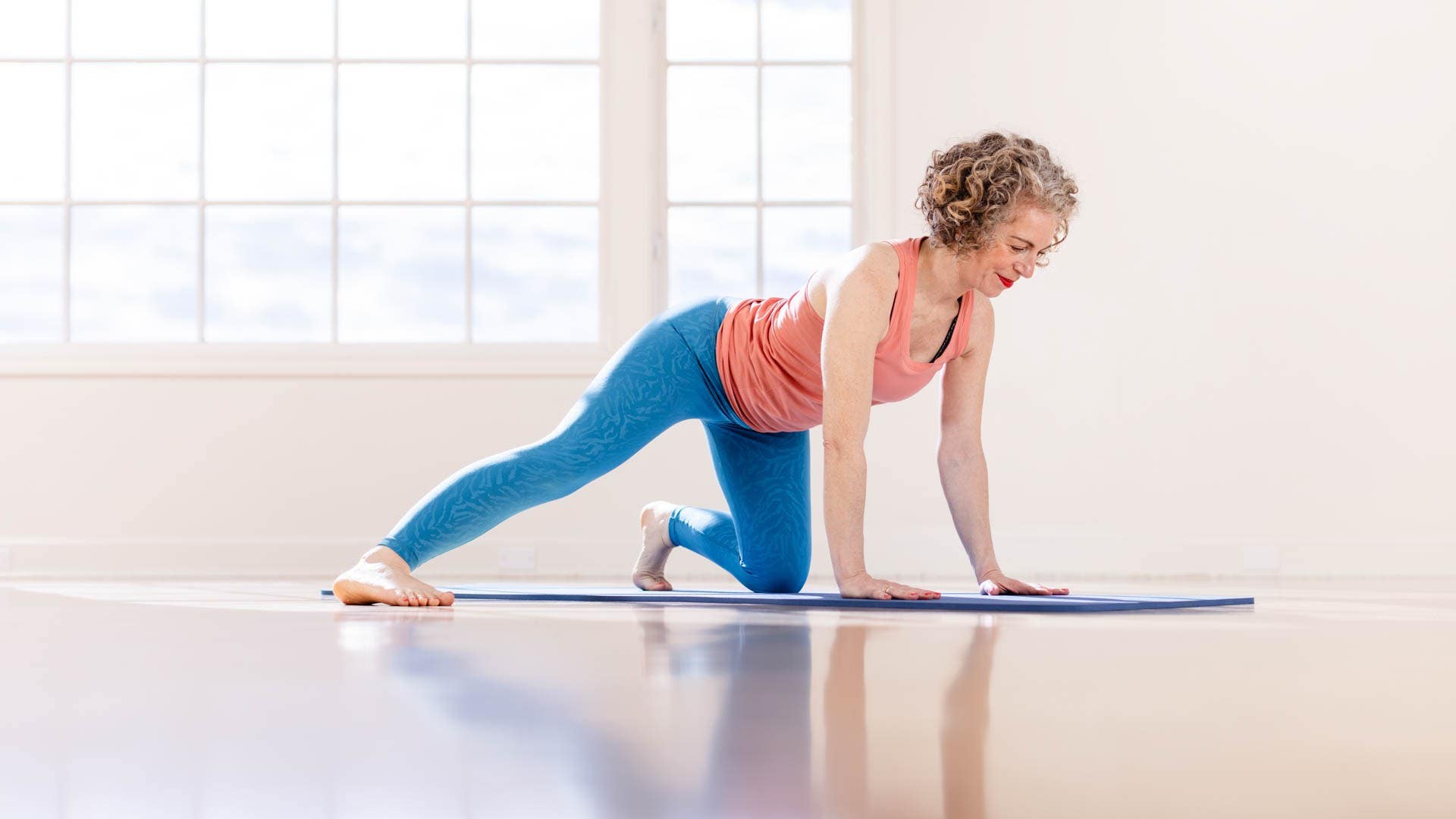






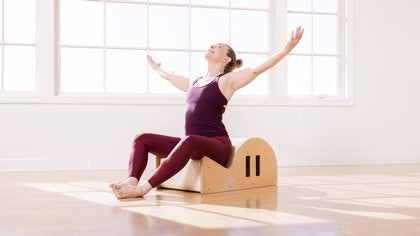
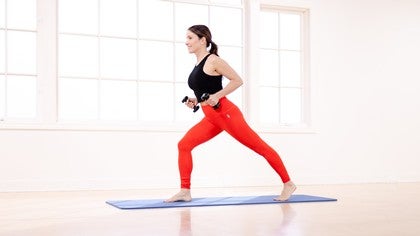








You need to be a subscriber to post a comment.
Please Log In or Create an Account to start your free trial.